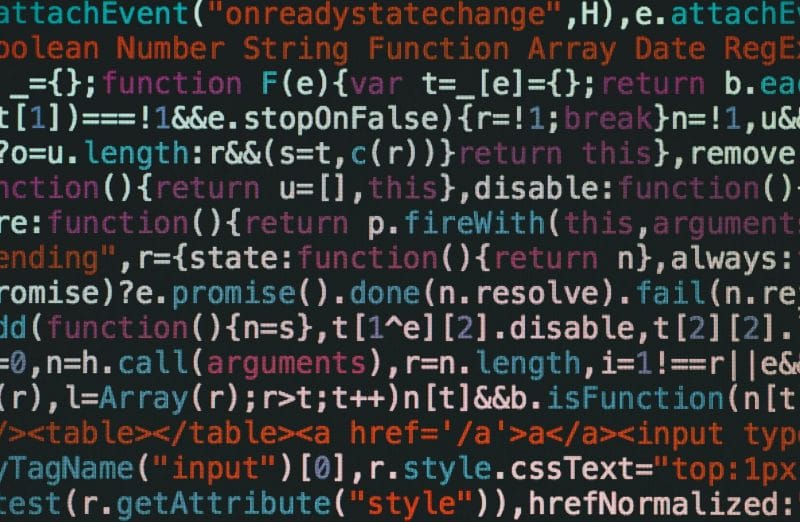In layman’s language, AI model training is the process of taking a computer program through the steps of gaining intelligence. Continuous tweaking of the process leaves you with an AI model capable of making decisions or executing tasks with little to no intervention.
The computer program (or AI model) is a sum of algorithms capable of learning by digesting curated datasets. So, to train an AI model, you need access to an AI model and a dataset—not to mention access to a powerful computer, too.
You have the option of using open-source AI models and datasets. Alternatively, you can build an AI model or curate custom datasets if you have the resources. As for the machine on which you’ll train the AI model, you are better off leasing servers for machine learning.
What Goes into AI Model Training? (The Process)
1. Data Collection
As mentioned, there are open-source datasets ready for use. Open-source datasets are ready-made for specific domains. Yes, they can save you the effort and time of data collection. But they may not perfectly match your needs. Here are alternative data collection tactics:
1. In-house data collection
If you can access in-house company data, you can collect data from databases, data logs, CRM systems, or website analytics. In-house data collection grants you access to proprietary information and control over data quality.
2. Crowdsourcing
If you have the budget, you can crowdsource the data. Crowdsourcing involves defining the qualities of the data you need and entrusting the public with finding the data. Taking this route grants you access to data from diverse sources and greater control.
3. Automated data collection
Automated data collection is a relatively affordable alternative to crowdsourcing and in-house data collection.
To automate the data collection process, you should know how to use AI for web scraping. Web scraping is the process of extracting data from websites with the help of various tools. Automation cancels out the need for manual collection, which in itself is impractical when it comes to AI model training.
No matter the data collection technique, ensure your data is relevant, accurate, consistent, representable, and complete. Such data increases the AI model’s accuracy, reduces bias, and increases users’ confidence and trust in the AI model.
2. Data Curation
With your rich data set in hand, proceed to validate the data. Counter-check to ensure it is relevant, complete, consistent, representable, and accurate. You can use various solutions like automated pipelines to check for data imperfections.
After data validation, you can now curate the data. Data curation involves preparing the data to match the requirements for the specific learning mechanism the AI model uses.
Earlier, we touched on the fact that AI models consist of diverse learning algorithms. Well, these algorithms fall under specific AI learning techniques. And each learning technique requires you to present data in a specific way.
Let’s explore data curation for these AI learning techniques:
1. Supervised/guided learning
An AI model containing algorithms that learn through supervised learning aims to predict or classify new data points.
Picture a teacher with labeled cards containing images of different animals. The students learn by relating the label to the photo, enabling them to identify the animals whenever they spot them. That’s how supervised learning works.
So, to curate data for an AI model infused with supervised learning algorithms, you should label your data. Also, ensure the units are consistent, remove incorrect values, and handle missing values.
Then, divide the curated data into training, validation, and test sets. You’ll use the training set to train the AI model, the validation set to evaluate performance, and the test set to assess the final model.
2. Unsupervised learning (Discovering patterns)
For unsupervised learning, the AI model aims to reveal underlying structures, group similar data, and uncover patterns without the help of labels. The model must understand the data by finding similarities and understanding the features that define a specific data set.
Here, you’re required to cluster your data based on features. Doing so helps the AI model navigate and learn from the unlabeled data.
3. Reinforcement learning (Learning by interaction)
Reinforcement learning AI models learn by exploring the specifics of a task within a defined environment and executing functions through trial and error. You guide the model through rewards and penalties. A good example is a game-playing AI model. It learns by playing and receiving feedback (losses or rewards).
For reinforcement learning, you should simulate an environment for the AI model to interact with. Define rules and simulate interactions.
You must also define the desired behaviors and the rewards (both negative and positive rewards). Remember, balancing the rewards keeps the model motivated. You should also define and balance exploitation and exploration policies.
4. Deep Learning (Neural networks and beyond)
Deep learning is an advanced learning mechanism that powers an AI model with the ability to handle sophisticated activities. For example, Deep learning AI models can compose music, understand language, or recognize images.
AI models with deep learning algorithms require you to collect large-scale data based on what you want the model to do. The data may include audio clips for a music-generating model, images for an image-recognition model, and text documents for a text-generating model.
Since deep learning algorithms employ multiple layers of learning, your goal is to have different versions of large data sets. For instance, to train an image recognition model, you should also get cropped, flipped, and rotated images.
3. Feeding the AI Model Curated Data and Iterative Refinement
After curating data based on the AI model’s learning technique, feed the data to the AI model. The model learns based on the algorithms it is built with.
During the learning phase, you should explore the model’s capabilities to fine-tune it. Without iteration, the model cannot adapt to changing data and cannot improve its performance when exposed to other sets of data.
Closing Words
If you haven’t already realized, AI model training is the heartbeat of artificial intelligence. Without it, systems capable of running without our intervention, like image recognition or detection systems, would not exist. So, as you keep learning about and exploring the AI space, strive to enhance your understanding of optimizing various AI model training sessions.








